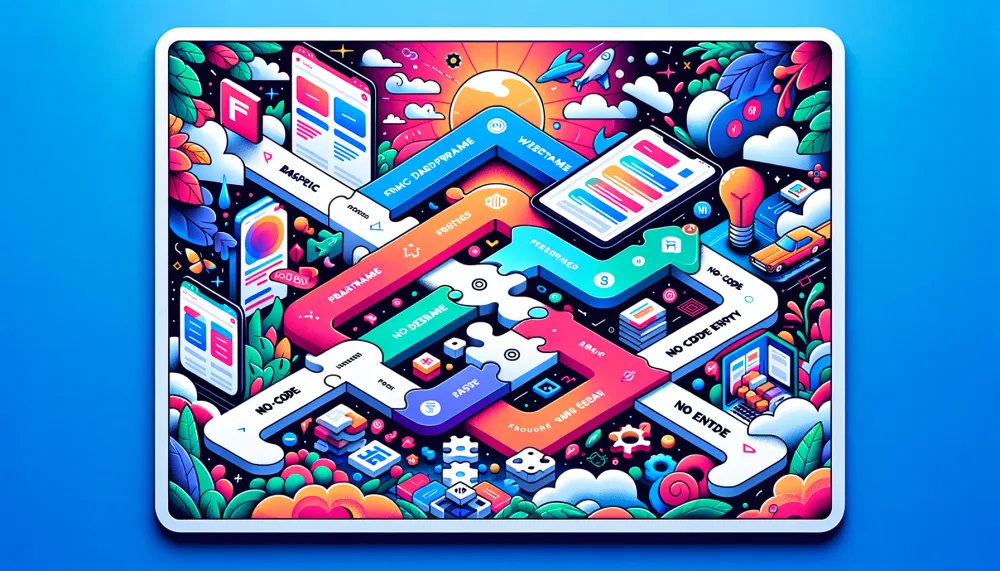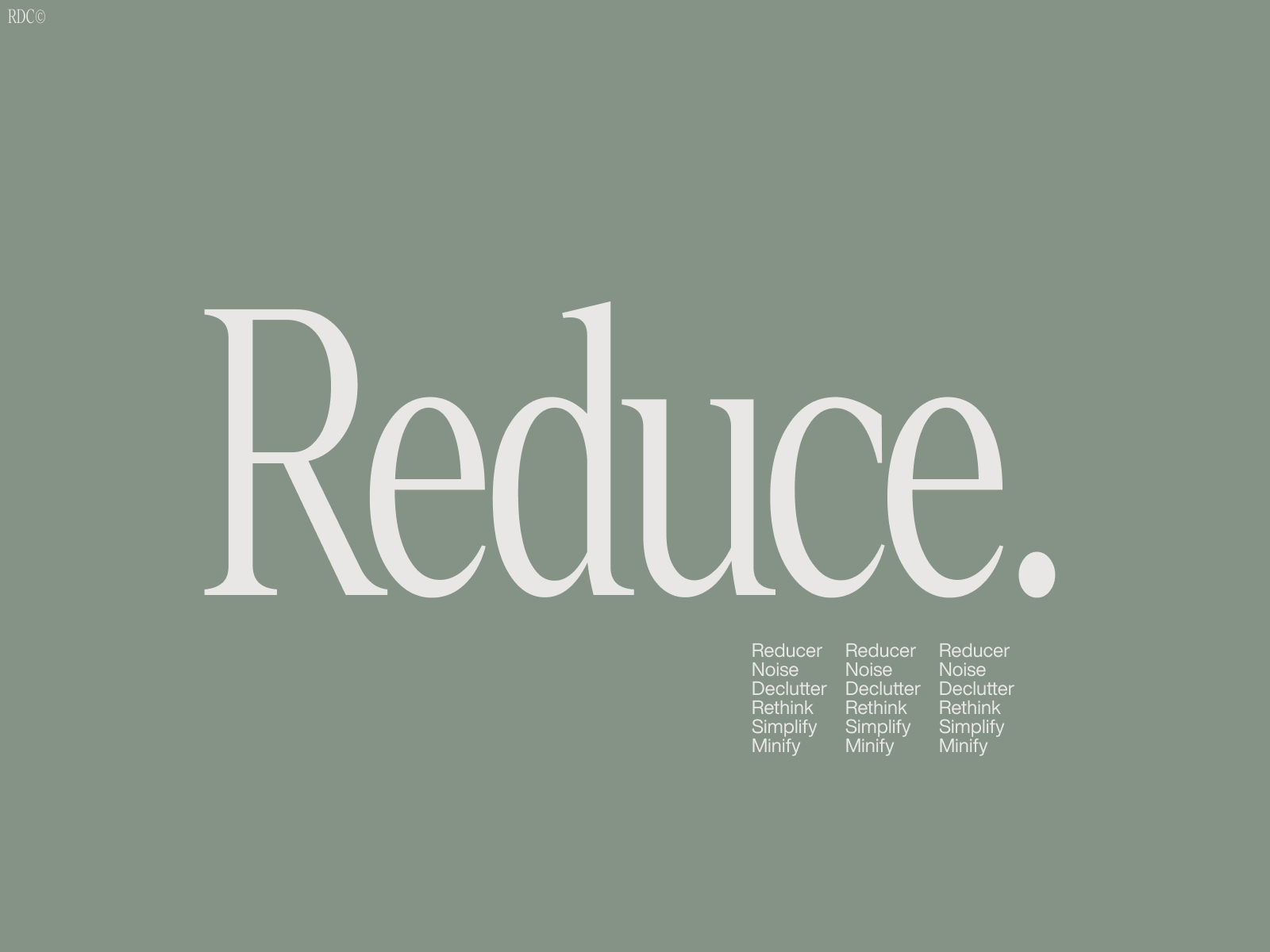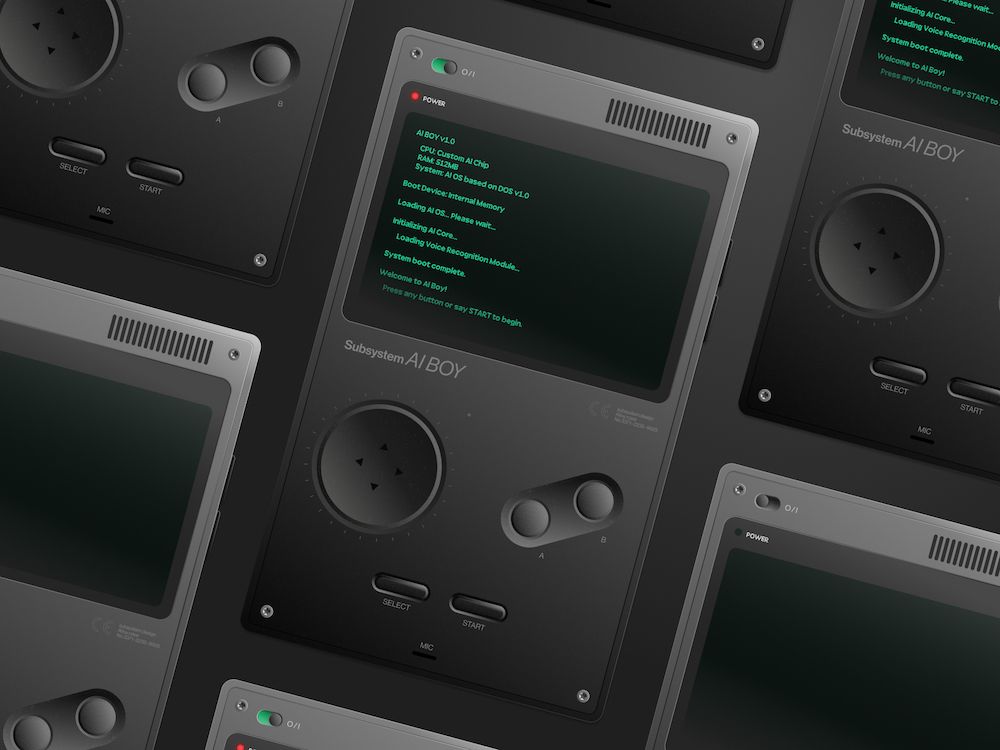Subscription-based design services are more than just a buzzword. They're a powerful, cost-effective solution for businesses in need of consistent, high-quality design work. But what makes them stand out from traditional design options? Let’s dive in.
How Subscription Design Simplifies Your Workflow
Instead of hunting for freelancers or agencies for each project, imagine having a dedicated team at your fingertips, ready to work on your design tasks as they arise. Here's why this model is gaining traction:
- Efficiency: No more searching for and onboarding new freelancers or agencies for each project. Your design tasks are handled promptly by a team that understands your brand.
- Cost-effectiveness: Save up to 50% compared to hiring a full-time design employee.
- Speed: Hit the ground running with a team that’s ready when you are. No more lengthy onboarding processes or delays in getting started.
As Tim Brown, CEO of IDEO, aptly put it, "Design is a way of making technology useful." Subscription-based design services are here to help you make the most of your design strategy without breaking the bank.
With their appealing pricing and flexibility, a cancel-anytime policy and near instant start date, they offer a more suited alternative for startups predominately.
Why Subscription Models Are Dominating Now
The subscription-based model is not a fleeting trend; it's a significant shift in how businesses operate and generate revenue. This is evident from a comprehensive study that reveals the substantial growth of subscription-based businesses over the past 7.5 years.
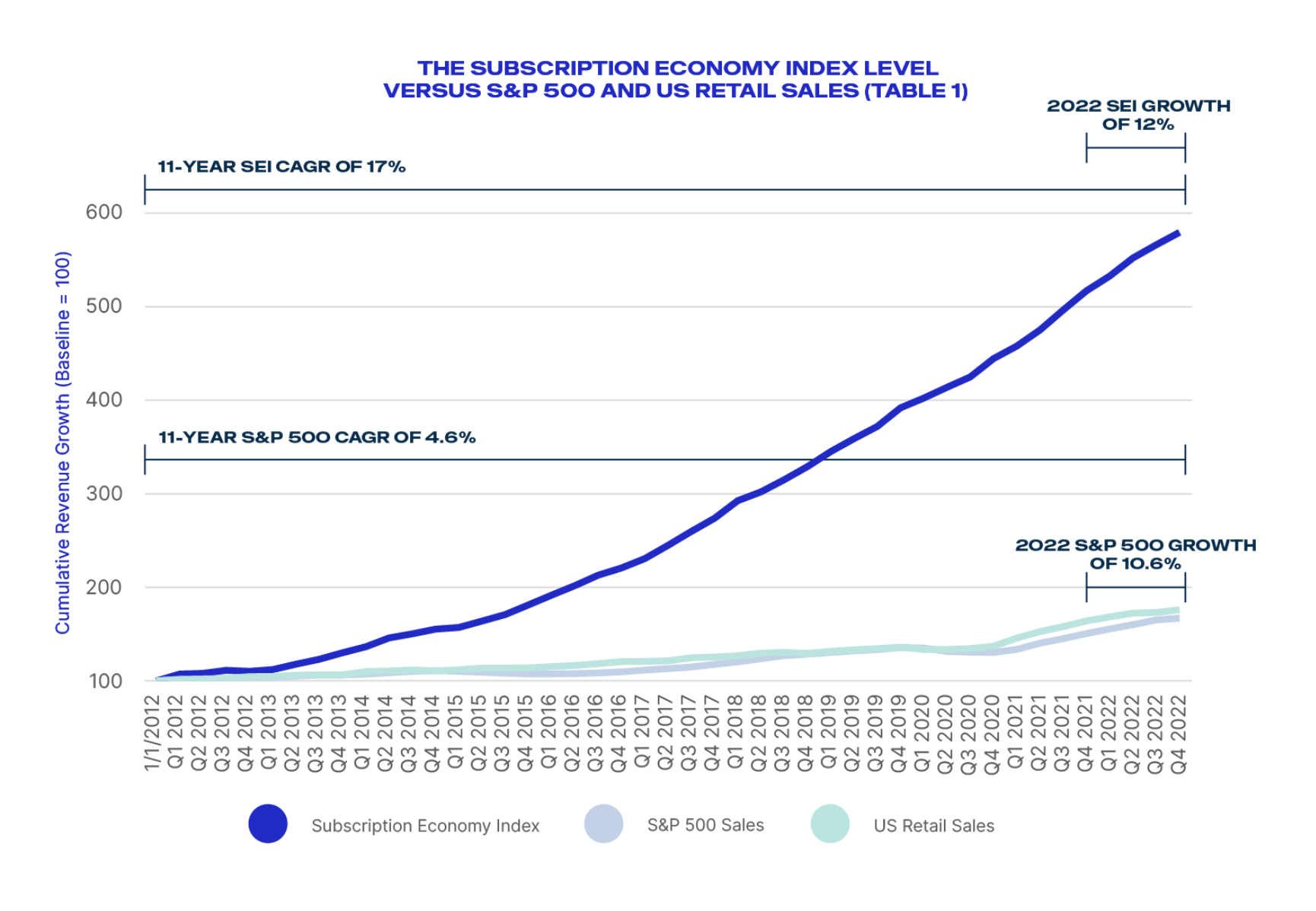
Over the past 11 years, subscription-based companies in the SEI have grown 3.7x faster than the companies in the S&P 500, which have historically represented more traditional, product-based businesses. Specifically, the compound annual growth rate (CAGR) for SEI companies was 17%, compared to 4.6% for the S&P 500 over the same period (Table 1). Despite various macroeconomic headwinds, companies in the SEI continued to outpace S&P 500 companies in 2022, with 12% revenue growth compared to 10.6%, respectively .
This growth isn't confined to a specific sector. As noted, “The Subscription Economy is not limited to one or two industries. We’re now seeing sectors far and wide placing subscriptions, over pure-play products, at the center of their businesses to achieve rapid and sustained long-term growth”.
Key insights from this data include:
- Lower Customer Churn for Business-Critical Subscriptions: Subscriptions that serve essential, mission-critical functions within a business tend to experience lower customer churn. This is likely due to the indispensable nature of these services, which become deeply embedded within a company's operations.
- Opportunities for Individual Account Growth: Launching and monetizing new services through a subscription model can drive greater individual account growth. The flexibility of digital services and connected hardware supports high Average Revenue Per Account (ARPA) growth rates.
- Usage-Based Pricing for Customer Retention: Incorporating usage-based pricing in subscription models is associated with lower churn and higher overall subscription growth. This suggests that the flexibility of usage-based pricing plays a crucial role in customer engagement and retention.
This data underscores the potential of subscription-based models to drive significant, sustained growth for businesses across various industries. It’s a compelling argument for why companies, including those in design services, should consider this model as a core part of their strategy.
Subscription Based Design vs Traditional Design Service: A Comparative Analysis
In the traditional model, you might hire a freelance designer or an agency for a specific project, or maintain an in-house design team. Both approaches have their merits, but they also come with challenges:
- Freelancers can be a great resource for one-off projects, but their availability may not align with your needs, and the quality of work can vary.
- In-house teams are a significant investment and can be overkill for businesses with fluctuating design needs.
Enter subscription-based design services, like Subsystem. You get a dedicated team of designers who understand your brand and are available whenever you need them, without the overheads of a full-time team. It’s a flexible, scalable solution that adapts to your business needs.
Here are some key differences between subscription-based design services and traditional models like retainers:
Subscription-based design services:
- Follow a monthly or yearly subscription model where you pay a fixed fee for a certain number of design projects or hours.
- Offer cost-effective solutions as you can budget in advance and know exactly how much you are spending on outsourced graphic design .
- Provide financial flexibility as you can cancel or upgrade your subscription anytime.
- Allow you to scale as much and as fast as you want or only pay for what you need within a given timeframe.
- Provide access to a dedicated team of designers who can work on multiple projects simultaneously.
- Offer fast turnaround times.
Traditional models like retainers:
- Require you to pay for each project separately.
- Can be more expensive as you may have to pay a higher hourly rate for each project.
- May have delays in delivery or revisions.
- May require you to hire in-house designers or freelancers, which can be more expensive.
- May have a clearer communication and feedback loop which is only possible with in-house graphic designers.
Overall, subscription-based design services offer more flexibility, cost-effectiveness, and access to a dedicated team of designers, while traditional models like retainers may offer a clearer communication and feedback loop.
The Financial Upside of Subscription-Based Design Services
Let’s get into the nitty-gritty of the costs. Hiring a full-time designer can be expensive when you factor in salary, benefits, and overhead costs. Freelancers might seem like a cost-effective alternative, but their rates can add up quickly, especially for larger projects.
With a subscription-based design service, you pay a fixed monthly fee for access to a team of professional designers. This cost includes not just the design work, but also the strategic guidance and project management that ensure your designs align with your business goals.
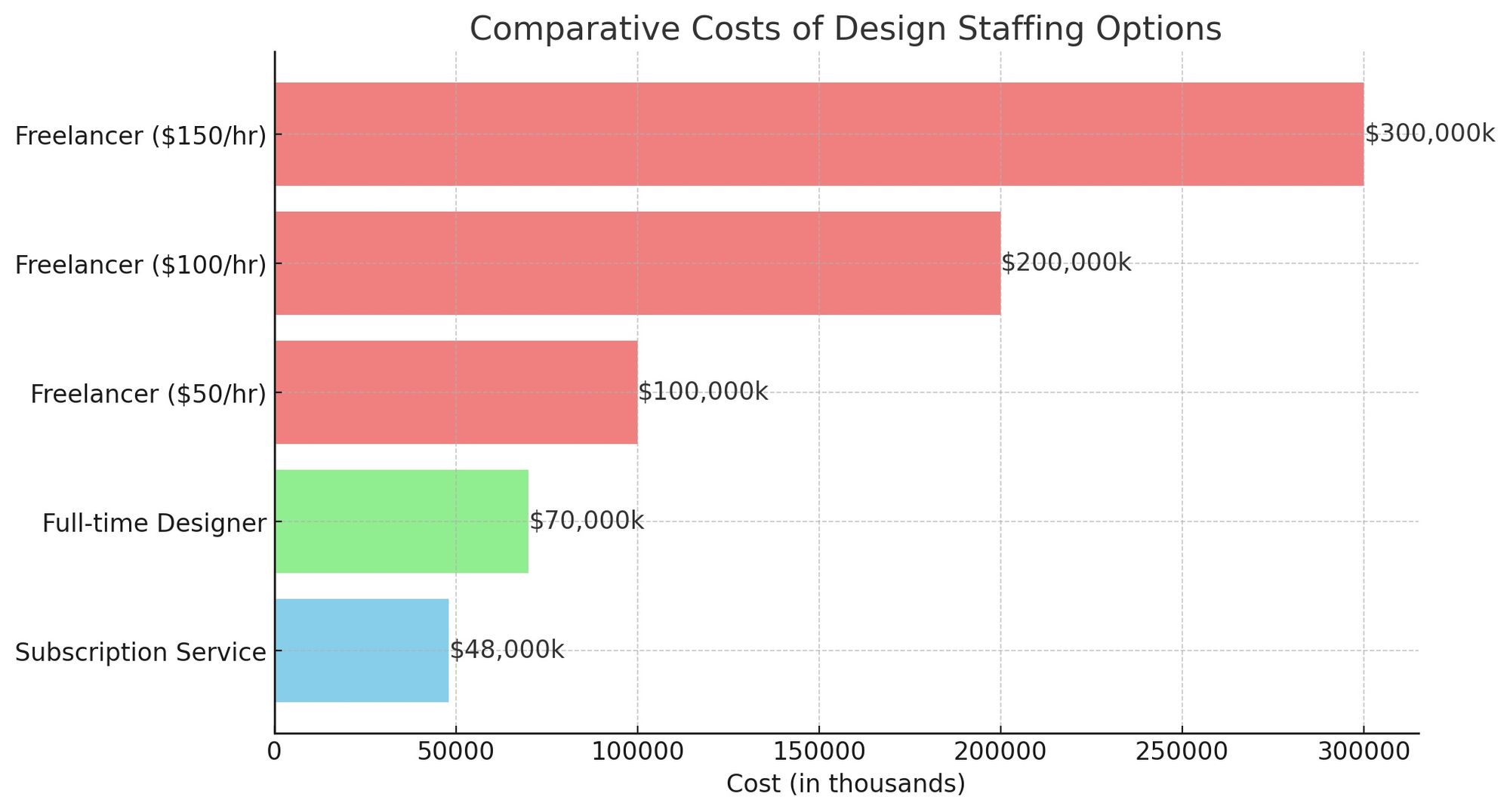
For example, let’s say you pay $4000 per month for a subscription-based service like Subsystem. Over a year, that’s $48,000. Now, compare that to the salary of a full-time designer, which can easily exceed $60,000 per year, plus benefits and overheads. Or the cost of hiring freelancers who may charge anywhere from $50 to $150 per hour.
The Unique Advantages of Premium Subscription-Based UI Design
You might be wondering, "What sets premium subscription-based UI design services apart from the rest?" In this section, we'll go into the specifics that make premium subscription-based services the go-to choice for businesses serious about their design strategy.
Consistency Across All Platforms - One of the standout features of premium subscription-based UI design services is the consistency they bring to your brand. Unlike freelancers who may work on a project-to-project basis, a subscription service ensures that every design element aligns with your brand's guidelines.
On-Demand UI/UX Expertise - With a subscription model, you have immediate access to a team of UI/UX experts. Whether you need to redesign a landing page or create a new mobile app interface, the team is just a message away.
Strategic Design Thinking - Premium services often go beyond just design; they incorporate business strategy into their design thinking. This ensures that every UI design element not only looks good but also contributes to achieving your business goals.
Seamless Communication - Many premium subscription-based design services offer direct communication channels like Slack, making it easier to request changes, give feedback, and approve designs in real-time.
Customization and Flexibility:
Having a design team that can adapt to changing needs is critical. What you get is a high degree of customization and flexibility, aligning well with the dynamic requirements of AI startups. They ensure a smooth, efficient workflow:
- Sequential Task Completion: Tasks are handled one by one, ensuring each UI design requirement receives undivided attention and is executed to perfection before moving on to the next.
- AI and Manual Tooling: A blend of AI-driven and manual tooling is employed to optimize proficiency and time management, ensuring your projects are completed efficiently without compromising on quality.
- Scaling On Demand: The ability to scale the number of designers on demand is a significant advantage. Whether ramping up for a major project release or scaling down in quieter periods, the service adapts to your current needs, providing a cost-effective solution.
- Consistent Quality via UI Design Systems: Utilizing UI design systems ensures consistency and quality across all design projects. This approach standardizes the design process, making it easier to maintain a cohesive brand identity across various platforms and interfaces.
- Thorough Documentation: For each project undertaken, comprehensive documentation is provided. This not only keeps you informed but also ensures a seamless transition from design to development, a crucial aspect for AI startups where technical and design elements are closely intertwined.
From brand consistency to seamless communication, these are the most important features that could make a real difference in your design strategy. If these advantages resonate with you, then a premium subscription-based service might be exactly what you've been looking for.
Is Subscription-Based Design the Solution You've Been Searching For?
If you're looking for strategic support to guide your design decisions, a subscription-based service could be the answer. This is especially true if you have a strong brand and mission that you want to bring to life through your designs.
A subscription-based service can help you do just that, providing strategic guidance and expert execution to make your vision a reality.
Revolutionize Your Design Strategy with Subscription Services
It can be a game-changer for your design strategy. It offers a unique blend of efficiency, cost-effectiveness, and strategic support, all wrapped up in a convenient subscription model.
At Subsystem, service is tailored to the needs of AI products and backed by a team of strategic thinkers and design experts.
Ready to take your design strategy to the next level? Explore our subscription-based services and see the difference it can make for your business. Give our Subsystem a try.


